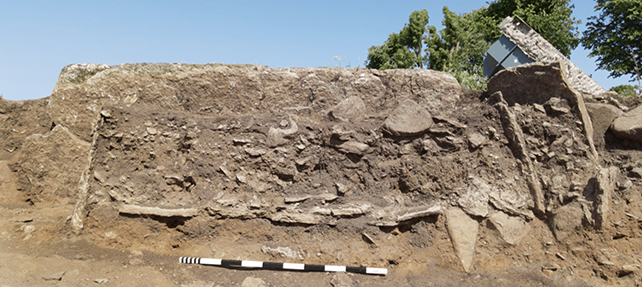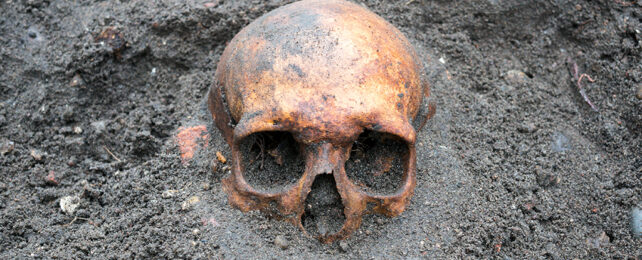The study of ancient gravesites is a fascinating (if morbid) way of peering into the past, though some searches can raise more questions than answers. Take for instance these Early Neolithic skeletons found in a Swedish tomb, which are all missing their skulls.
The stone burial chamber (or "dolmen") involved was found in Tiarp, near Falköping, and excavated by researchers from the University of Gothenburg in Sweden and Kiel University in Germany. They've managed to catalog body parts from the remains of at least 12 people, but not everything is there.
For the time being at least, the experts are at a loss to explain where all the heads have gone or why they were taken – if indeed they were entombed in the first place. It could be theft, a ritual, a series of beheadings, or something else, though there are no signs on the remains to indicate they experienced violence while alive.

"It's an early grave which dates to the Early Neolithic period, about 3500 BCE," says archaeologist Karl-Göran Sjögren, from the University of Gothenburg.
"Skulls and large bones are missing and may have been removed from the grave. We don't know whether that has to do with burial rituals or what's behind it."
Of course there will have been plenty of decay over the last few millennia, but that doesn't necessarily explain why so many of the smaller bones at the site are still intact, while skulls and some other larger bones are missing.
It's not something that archaeologists often come across, though the creepy occurrence has been reported before: an even older site in Slovakia was found to be missing its skulls, with decapitation, disease, and death cults all floated as possible explanations.
"This differs from what we usually see in megalith graves, i.e. stone burial chambers from the Neolithic period," says Sjögren. "Usually, the bones that are missing are smaller bones from feet and hands."
Besides the remains of humans, the team has also been able to identify bones from rodents, frogs, pigs, and sheep or goats – though not all of these bones may date from the same time period.
While Falköping is an area well known for its passage graves – particular styles of tombs, with passages included – this one is more unusual. It's 150-200 years older than most of the others, and has some distinctive construction features.
The team is now working hard to learn more about the excavated skeleton parts, which most likely belonged to a community of farmers. Being able to assess whether or not the adults and youngsters in the grave were related, for example, should make it easier to understand what exactly happened here.
"The preliminary DNA results show that the DNA in the bones is well preserved," says Sjögren. "This means we will be able to reconstruct the family relationships between the people in the grave and we are working on that now."
The research has been published in the Journal of Neolithic Archaeology.
